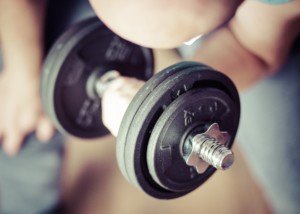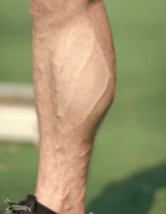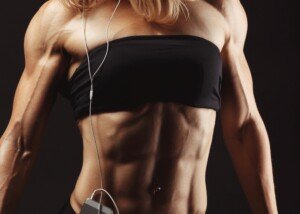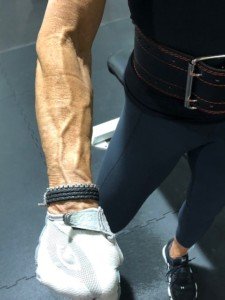
This incredible veiny forearm belongs to a 71-year-old woman!
The vascular forearm in that top photo belongs to Sharon Smith of Denver, Colorado, who began training in her late 50s.
A forearm like that doesn’t come by accident. Nor does the “veinyness” come as simply a result of age.
How a Woman Can Get Forearm Vascularity at Any Age
Smith explains, “I can say that with advanced training of back and biceps, my forearms have also gained more size and have become more vascular. Like muscle size and distribution, I think vascularity is also part of a genetic makeup.
“As we train large muscle groups to respond to increased weight resistance, other supporting structures are also stimulated to grow.
“I believe veins become larger, denser and more efficient in transporting nutrients to growing muscle. As my back has developed so has my forearm vascularity.”
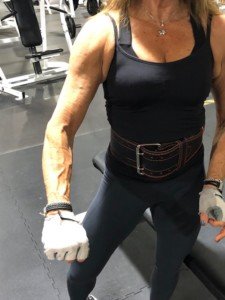
When Smith trains, she does so seriously, with gusto and fierceness. Many 60+ women are lifting weights these days, and if you make a point of observing them, it won’t be long before you see a few common denominators:
• Going through the motions (very high reps) with very light weight loads or tiny dumbbells
• Avoidance of the deadlift, which recruits forearm muscle
What about younger women who want veiny forearms?
Smith — a substitute teacher and personal trainer — has advice that applies to women of all ages who want that enviable vascular forearm (and biceps area as well).
“I don’t train my forearms in isolation,” says Smith. “They are trained with back and bicep hammer curls. They are also trained with a pronated [overhand] grip on the bar for the deadlift.”

Smith doing a lat pull-down.
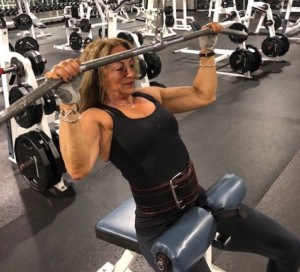
Though biceps curls are considered an isolation exercise for the biceps, this single-joint movement also recruits the forearm muscles.
Anyone who has ever performed intense deadlifts knows that this giant compound exercise requires a sturdy grip. And of course, the forearm muscles control the grip.
All back exercises, such as the lat pull-down, recruit forearm muscles. The key is to perform all of these moves with intensity.
The entire set should feel challenging, rather than just the last few reps. If you’re able to carry on a conversation during the set, the load isn’t heavy enough.
If, during your set, you’re laughing while someone is speaking to you – again, the load is too light to ignite super results.
Body Fat Percentage and Muscle Development
Being skinny doesn’t always lead to fit-looking, vascular forearms. And certainly, there are readers here who I’m betting think that Smith’s forearm is “too thin” or “unhealthy looking.”
But ask yourself which forearm you’d rather have when you’re 70: Smith’s, or the scary-looking one below?
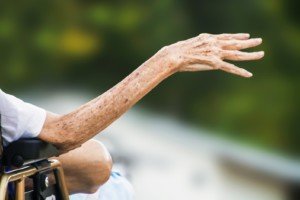
The difference is like night and day, and now you can clearly see what a true “thin” and “unhealthy looking” arm looks like.
Muscle Loss and Low Fat
Muscle loss (due to the absence of strength training + advancing age) may make forearm veins visible in some women. But their arms won’t look fit and strong.
What makes veins visible in a fit and healthy way is a program of intense weightlifting and a low body fat percentage.

Smith demonstrates her low body fat percentage — the result of a clean diet with controlled portions, and plenty of carbs to fuel intense weight workouts 5x/wk for about an hour.
The Right Kind of Diet
“My diet is pretty clean [few processed foods] but not really strict at this time,” says Smith. “I’m trying to gain a little more muscularity before I start cutting into my carb intake.
“More salt in my diet does cause me to hold some water and so hides some of my vascularity.
“To be able to really see more veins, if that’s what you really like, you need to get body fat down to under 14% or so and lower salt intake.
“Having some carbs after carb depleting before a workout can bring out more vascularity as well.”
Many foods have “hidden” sodium. Check nutrition labels. Your total daily salt or sodium intake should NOT exceed 1,500 mg if you want veiny forearms.
Supplementation Before a Workout
“Before any of my workouts I take a pre-workout supplement to aid in better nutrient transportation for a better pump and to have a more focused workout,” explains Smith.
“The pre-workout I use is Cellucor C4 15-20 minutes before my workout. I usually add more beta alanine to the 1.6 gm/serving for a total of 2.5-3 g to reduce lactic acid buildup.
“And I add more L-arginine to the 1 gm/serving for a total of 2-3 g. L-arginine benefits muscle growth and performance and produces nitric oxide, a molecule essential to healthy circulation and cell communication.
“The production of NO2 causes vasodilation [expansion or dilation of blood vessels] so that nutrients are better delivered to the working muscles.”
Who says that only MEN should have forearm veins?
Forearm veins are the hallmark of hard work and perseverance.
They are a sign of a fit and able body, because in order for forearms to work hard, the entire arm and often the entire back must also work hard.
You will not gain buff forearms by ONLY doing wrist rolls with a dangling weight or wrist extensions and flexions. Won’t happen.
Other Exercises that Recruit Forearm Muscles
• Pull-up, chin-up
• Bent-over dumbbell or barbell row
• Seated row

